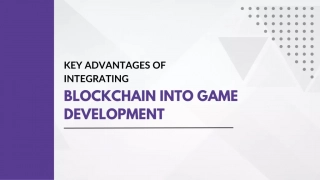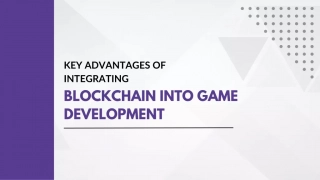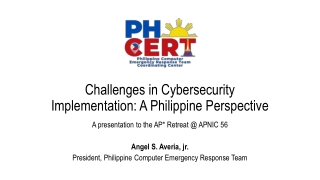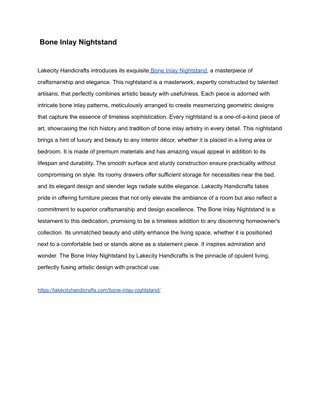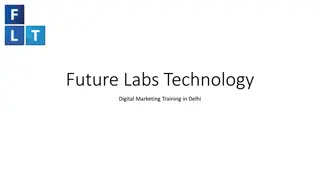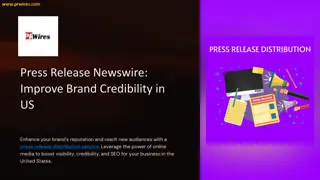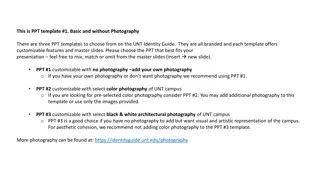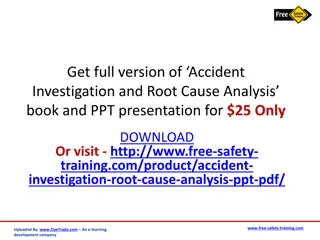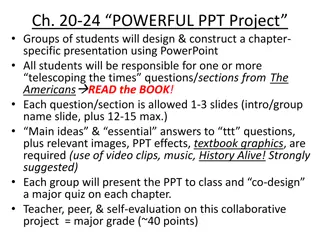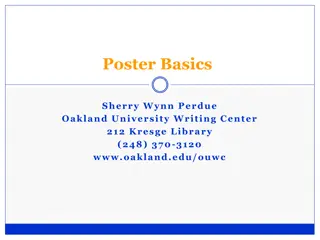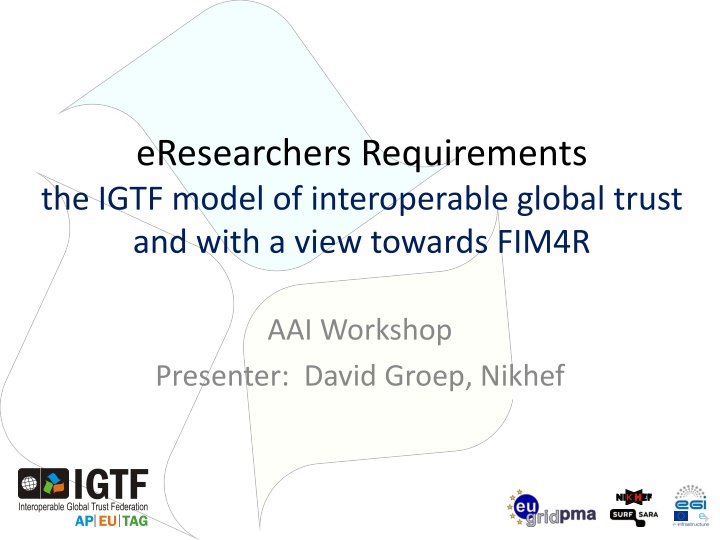
IGTF Model for Global Trust and Interoperability
Explore the requirements and characteristics of the IGTF model, focused on fostering global trust and interoperability within the research community. Learn about minimum requirements, community characteristics, and the role of the IGTF in supporting distributed IT infrastructures. Presenter: David Groep, Nikhef.
Download Presentation

Please find below an Image/Link to download the presentation.
The content on the website is provided AS IS for your information and personal use only. It may not be sold, licensed, or shared on other websites without obtaining consent from the author. If you encounter any issues during the download, it is possible that the publisher has removed the file from their server.
You are allowed to download the files provided on this website for personal or commercial use, subject to the condition that they are used lawfully. All files are the property of their respective owners.
The content on the website is provided AS IS for your information and personal use only. It may not be sold, licensed, or shared on other websites without obtaining consent from the author.
E N D
Presentation Transcript
eResearchers Requirements the IGTF model of interoperable global trust and with a view towards FIM4R AAI Workshop Presenter: David Groep, Nikhef
IGTF Interoperable Global Trust Federation supporting distributed IT infrastructures for research IGTF brings together e-Infrastructure resource providers, user communities and identity authorities to agree on global, shared minimum requirements and assurance levels inspired and coordinated by the needs of relying parties Trust is technology-agnostic focus on global, coordinated identity across communities and across service providers for cooperative services define best practices for assurance levels, attribute authority operations, credential management, auditing and reviewing
Coverage: users and providers https://www.igtf.net/ ~100 000 users and resources 89 national and regional identity authorities: R&E and commercial >1000 different user communities: small and large, national and global Major relying parties: EGI, PRACE, XSEDE, Open Science Grid, HPCI, wLCG, OGF, IGTF is a coordinating body, and not a legal entity in itself although its members may be
Minimum Requirements Federation imposes minimum requirements on identity provider participants Reflect operational and security needs of resource providers Differentiated LoA support classic user-based subscriber services: serve all users identity services leveraging (R&E) federations with ID vetting LoA1+ Identifier-Only Trust Assurance if relying party has other ways to vet its users, allow for lower-assurance identifiers, thus enabling more ID federations LoA2- Research-inspired verification process: self-audits, peer-review, transparent open policies and processes meet or exceed required minimum standards
Community characteristics More than one administrative organisation More than one service provider participates in a single transaction More than one user in a single transaction More than one authority influences effective policy Single interoperating instance at a global level
AAI requirements FIM4R captures the key requirements different Levels of Assurance with provenance authorisation under community and/or facility control browser & non-browser federated access attributes must be able to cross national borders and we also need federations and IdPs to work in a collaborative security and policy framework, addressing the areas identified in e.g. SCI support for individual researchers communities are widely distributed and although large as a whole may be only a one or a few per institution global scope: scientific collaborations extend beyond Europe FIM4R: https://cdsweb.cern.ch/record/1442597/files/CERN-OPEN-2012-006.pdf SCI Security for Collaboration among Infrastructures: https://www.igtf.net/sci
Are the Requirements Met? NO - security trust and operational issues - differentiated LoA: reviewed and/or audited - support for community and facility control, set by themselves and propagated to the SPs - both browser and non-browser access - attributes to cross national borders Each of these may have been solved in some federations but what we need is a coherent European/global view, where these requirements are addressed ubiquitously!
Are the Requirements Met? YES Much of the technology is there for community attributes, facility control, non-web-access we just need to bridge it to together, and make sure the technology is deployed uniquitously there may even be too much technology, in that we now need to bridge for interoperability bridges, proxies, and credential stores will a part (likely supported by the RPs, communities and facilities) attributes to cross borders: DPCoC is a great step now can we do the same for IdPs please? the GEANT eduGAIN Federation Template looks like going this way the model of minimum requirements and open processes worked well in the IGTF and is natural to a research environment
www.igtf.net Interoperable Global Trust Federation



